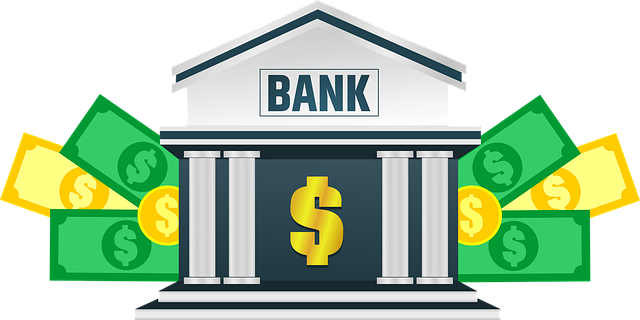Category: How to Choose the Right Alternative Business Loan
How to Choose the Right Alternative Business Loan: A Comprehensive Guide
Introduction
In today’s dynamic business landscape, accessing capital is a critical step for entrepreneurs and established firms alike. Traditional bank loans often come with stringent requirements and lengthy approval processes, leaving many business owners seeking alternative financing options. This has led to a surge in interest for alternative business loans, which offer more flexible terms and faster access to funds. Choosing the right alternative loan can be a game-changer for businesses, providing the necessary capital to fuel growth, innovate, or navigate challenging economic times. This article aims to provide an in-depth understanding of this process, guiding readers through the intricacies and helping them make informed decisions when securing alternative business loans.
Understanding How to Choose the Right Alternative Business Loan
Definition and Core Components
An alternative business loan, also known as a non-bank loan or shadow banking product, is a financing option provided by entities other than traditional banks. These lenders can include online lenders, peer-to-peer (P2P) lending platforms, alternative finance companies, and even business peers. Alternative loans are characterized by their non-conventional nature, often removing the need for collateral, offering more flexible repayment terms, and providing faster access to funds compared to conventional bank loans.
The process of choosing the right alternative loan involves several key components:
- Loan Purpose: Define the intended use of the funds, whether it’s for working capital, equipment purchase, expansion, or debt refinancing.
- Lender Selection: Research and identify suitable lenders based on factors like interest rates, terms, credit criteria, and customer reviews.
- Loan Terms and Conditions: Carefully evaluate repayment periods, interest calculations, late fees, prepayment penalties, and any additional charges.
- Creditworthiness Assessment: Understand the lender’s evaluation of your business’s financial health, including cash flow analysis, debt-to-income ratio, and credit history.
- Security and Guarantees: Determine if collateral is required and assess the implications for your assets if you default on the loan.
- Regulatory Compliance: Ensure the lender operates within legal boundaries and follows fair lending practices.
Historical Context and Significance
The concept of alternative business financing gained prominence during the global financial crisis of 2008, when traditional banking systems became less accessible. This period saw a surge in P2P lending and online credit platforms as they offered more flexible and rapid funding options. As businesses struggled to obtain bank loans, these alternative lenders filled a void, providing much-needed capital.
Over time, the importance of alternative business loans has grown significantly for several reasons:
- Increased Access to Capital: Many small and medium-sized enterprises (SMEs) face challenges in meeting their funding needs from traditional sources, making alternative loans an attractive option.
- Flexibility and Speed: Alternative lenders often offer more adaptable loan terms, faster approval times, and easier application processes compared to banks.
- Diversification of Financing Options: Businesses can diversify their financing portfolios by exploring multiple lenders, reducing reliance on a single source.
- Competitive Interest Rates: In some cases, alternative loans provide lower interest rates, especially for well-established businesses with strong credit profiles.
- Innovation and Adaptability: The emergence of fintech and digital lending platforms has led to innovative products tailored to specific business needs.
Global Impact and Trends
International Influence
The impact of choosing the right alternative business loan extends beyond national borders, as global trends shape this financing sector:
- Digitalization: The rise of digital technologies has revolutionized the way businesses access loans worldwide. Online lending platforms now dominate many markets, offering convenient and accessible credit to a diverse range of borrowers.
- Regional Disparities: Different regions exhibit varying levels of alternative loan penetration. North America and parts of Europe have seen significant adoption, while emerging markets in Asia and Latin America are witnessing rapid growth due to improved digital infrastructure and regulatory reforms.
- Regulatory Harmonization: Global efforts to harmonize regulatory frameworks have led to more consistent lending practices across borders. This standardization facilitates cross-border borrowing and investment.
Key Trends Shaping the Trajectory
Several trends are currently influencing the alternative business loan landscape:
- Rise of Fintech: Financial technology (fintech) startups continue to disrupt traditional banking models, offering innovative lending solutions and improved user experiences. Many fintech lenders utilize advanced analytics and AI for risk assessment and personalized loan offerings.
- Peer-to-Peer (P2P) Lending Growth: P2P lending platforms have experienced substantial growth globally, with borrowers benefiting from direct access to individual investors or institutional lenders. These platforms often provide more transparent terms and lower fees.
- Crowdfunding as a Loan Alternative: Crowdfunding has evolved beyond fundraising, with some platforms offering loan products where businesses receive funding in exchange for future revenue or equity. This approach is particularly appealing for startups and innovative ventures.
- Regulatory Reforms: Governments worldwide are implementing reforms to support the growth of alternative finance while ensuring consumer protection. These reforms include licensing frameworks, anti-money laundering regulations, and data privacy standards.
- Sustainable and Impact Investing: There is a growing trend towards lending with an environmental, social, and governance (ESG) focus, where investors seek positive impact alongside financial returns. This drives alternative lenders to offer green loans and support sustainable business practices.
Factors to Consider When Choosing an Alternative Loan
1. Loan Purpose and Term
- Clearly define the purpose of the loan: Is it for expansion, equipment upgrade, working capital, or debt consolidation? Understanding your needs will help determine the most suitable loan type.
- Choose a repayment term that aligns with your cash flow projections. Short-term loans offer lower interest rates but require faster repayment, while long-term loans provide more flexibility.
2. Interest Rates and Fees
- Compare interest rates offered by different lenders. Keep in mind that lower rates might come with shorter terms or stricter collateral requirements.
- Evaluate additional fees such as origination charges, processing fees, and prepayment penalties. Some lenders may offer lower rates but compensate with higher fees.
3. Credit Requirements and Assessments
- Understand the lender’s credit criteria and how they assess your business’s financial health. Some alternative lenders may consider non-traditional credit scores or focus on cash flow analysis.
- If you have a poor credit history, be prepared to provide detailed financial information and explain any adverse events. Lenders might offer subprime loan products but with higher interest rates.
4. Lender Reputation and Reviews
- Research the lender’s reputation and customer feedback. Online reviews, forum discussions, and industry associations can provide insights into their service quality and reliability.
- Consider the lender’s experience in your specific industry, as they may have a better understanding of your business needs.
5. Loan Structuring and Terms
- Examine the loan agreement carefully. Understand how interest is calculated, when payments are due, and what happens if you miss a payment.
- Look for flexible terms that allow for future refinancing or early repayment without penalties. Some lenders offer customizable options to suit your business cycle.
6. Security and Guarantees
- Determine whether the lender requires collateral and assess its implications. Collateral can protect the lender but may expose your assets to risk if you default.
- Understand the consequences of loan defaults, including legal actions and potential asset seizures. Some alternative lenders may offer more lenient terms without collateral.
7. Regulatory Compliance and Protection
- Verify that the lender is licensed and operates within the jurisdiction’s legal framework. Check for compliance with data privacy laws and fair lending practices.
- Familiarize yourself with consumer protection regulations to ensure your rights as a borrower are respected.
Strategies for Securing the Best Alternative Business Loan
- Compare Multiple Offers: Utilize online platforms or broker services that connect you with multiple lenders. This comparative analysis helps identify the most favorable terms and rates.
- Negotiate and Ask Questions: Don’t be afraid to negotiate loan terms, especially if you have a strong credit profile or a profitable business. Ask about potential discounts, fee waivers, or customized options.
- Build Business Credit: If your company lacks a credit history, work on building business credit by establishing lines of credit, making timely payments, and maintaining good financial records.
- Provide Detailed Financial Information: Lenders will want to review your financial statements and cash flow projections. Ensure these documents are accurate and up-to-date.
- Consider Co-signing or Collateral: If you struggle with creditworthiness, partnering with a co-signer or offering collateral can improve your loan prospects. However, be mindful of the risks involved.
- Stay Informed on Market Trends: Keep abreast of industry news and emerging lending trends to make informed decisions when securing alternative business loans.
Conclusion
Choosing the right alternative business loan is a critical step for entrepreneurs and business owners seeking capital. By understanding the core components, global trends, and factors to consider, businesses can navigate this complex landscape with confidence. The flexibility and accessibility of alternative financing have made it an attractive option for many, but thorough research and careful evaluation are essential to securing the best terms and avoiding potential pitfalls. As the alternative finance sector continues to evolve, staying informed and adaptable will be key to unlocking the full potential of these innovative lending solutions.









